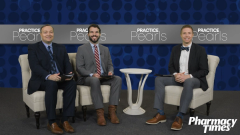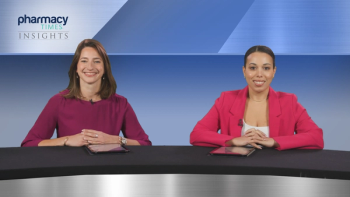
Patient-Specific Factors Influencing MM Treatment Decisions
Key opinion leaders provide insight on patient considerations when formulating an optimal treatment regimen for multiple myeloma.
Ryan Haumschild, PharmD, MS, MBA:You touched on this, but indulge us a little more in terms of those patient-specific factors you’re considering when selecting a treatment option. What are the treatment options that are most appropriate for patients having an indolent relapse? How do you have a shared discussion with the patient? What patient preferences will you consider when you’re selecting a regimen for that patient?
Gabe Hinojosa, PharmD, BCOP: From the pharmacist perspective, the onus of shared decision-making falls on the provider, but the pharmacists and the multidisciplinary team are involved in that discussion as well. It’s having a discussion with our team, with the provider, with the APPs [advanced practice providers]. It’s asking, “What types of discussions were you having with the patient? Are they working? Are they fit? Do they have drivers?” We’re looking at where they live in relation to our center. Maybe these patients are traveling 300-plus miles to come to a larger city to be treated. Homing in on those factors can be very important.
From a pharmacist’s perspective, of shared decision-making and looking at the best choice of therapy, 1 of the biggest considerations is the potential for toxicities with each drug and what comorbidities the patient already has at baseline. For instance, patients with severe peripheral neuropathy at baseline from other disease states, such as type 2 diabetes, may not be the best candidate for a proteasome inhibitor that could cause additional neuropathy, such as bortezomib or ixazomib. That patient may be more suited for a drug like carfilzomib. If a patient has a lot of cardiac toxicities at baseline, you’re going to avoid carfilzomib. I’m looking at the potential toxicity profile of each drug individually and comparing that with the patient’s individual risks at baseline and any other comorbidities.
Ryan Haumschild, PharmD, MS, MBA: I like how you brought in neuropathy and cardiac toxicity. Those are things we want to watch closely with these patients to make sure we’re making a regimen that will lead to success. Ultimately, there’s no cure for myeloma. We want to look at it as a chronic disease, not to undermine the importance of the disease but to make sure patients live long and healthy lives. I appreciate you going through those factors.
As we start to make patient-specific preferences, a lot of us are thinking about patient lifestyle. How do we consider a regimen that’s unique to that patient? When we think about different models of care, like the Enhancing Oncology Model and others, they want to encourage providers to engage with the patient on lifestyle-specific factors, even concerning social determinants of health. That’s something you’re evaluated against in a lot of value-based care.
Dr Anderson, as a provider interacting with a lot of patients, you have a lot of years of experience in myeloma and helped build the program. How are you able to incorporate lifestyle into patient preferences? Is it something like the route of administration, the frequency? How do you engage in a conversation with your patients? Ultimately, how does that drive the treatment decision for them?
Larry Anderson, MD, PhD, FACP: A lot of it comes down to what the patient is willing to do. You have to look at the regimen not just as the first cycle but down the road, for the long term with each regimen. They may have to go through a few months of a lot of difficulties to get there for all these injections, but does it eventually become easier? Look down the road after several months of a certain regimen. If it meets their requirements for quality of life and lifestyle, then that’s the way to go. Other regimens might have a long-term commitment to intravenous infusions, and they might be willing to do that for the short term but not the long term. Sometimes you have to get creative and modify the treatment to that patient. For example, once they’ve had a nice response from minimizing the steroids—the toxicity from dexamethasone is often more than from chemotherapy—omit them after several months or a year, especially if they’re having toxicities. [We need to] be able to modify these treatments, the dosing, and schedule to fit with that patient’s lifestyle.
Ryan Haumschild, PharmD, MS, MBA: When we think about lifestyle, we think about toxicities and goals of care. We want a patient to be disease-free as long as possible or hit MRD [minimal residual disease] if that’s what we’re looking for. There are times, though, when we need to switch to alternative therapies. Dr Anderson, when you’re thinking through a patient, at what point are you starting to consider, “I may need to look into an alternative therapy for this patient.” When you’re thinking about alternative therapy, what factors are involved in switching? Is it age, activity level, or underlying toxicities? Talk us through that decision-making.
Larry Anderson, MD, PhD, FACP: Let’s say a patient is on maintenance therapy with an oral drug and is gradually relapsing or progressing. If this patient’s markers aren’t meeting criteria for progression, sometimes we’ll just slightly modify their therapy, or we’ll go up on the dose if they can tolerate it, adding 1 other drug. But if they’re having a true relapse and meeting the criteria for progression, we’ll need to bite the bullet and do a 3-drug regimen to help that patient acclimate to that lifestyle change that might happen once we get there. Although in patients who are really busy and really active, or who live farther away, we need to embrace the triplet oral regimens. This gives them the freedom to have the lifestyle choices they need, coming in monthly for labs or going to a local lab and doing telehealth. Things like that have drastically changed how we approach some of these relapses.
Transcript edited for clarity.
Newsletter
Stay informed on drug updates, treatment guidelines, and pharmacy practice trends—subscribe to Pharmacy Times for weekly clinical insights.




















































































































































































































